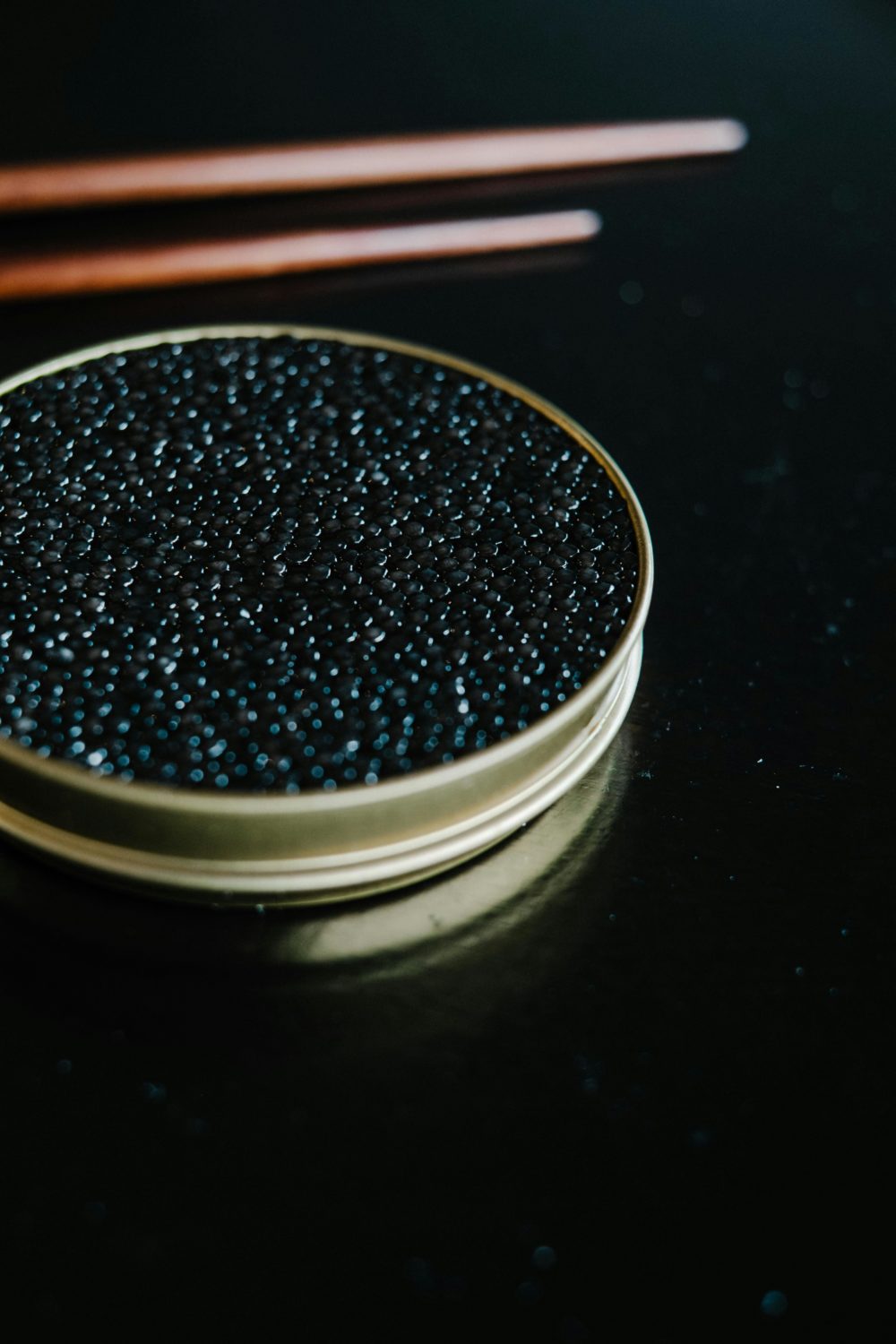
Sturgeon fish caviar, recognized as one of the most luxurious and expensive delicacies in the world, is often synonymous with opulence and fine dining. It consists of sturgeon fish eggs that have been meticulously cured to enhance their rich flavor profile. When enjoying caviar, you’re partaking in a culinary tradition that has been savored by gourmands for centuries. Its prestige is not solely due to its unique, buttery taste and refined texture but also because of the rarity and difficulty associated with harvesting the eggs from the sturgeon, a fish species that can take many years to reach maturity.
The cost of sturgeon caviar is influenced by several factors, including the rarity of the fish species, the complex process of harvesting, and the caliber of the eggs. The sturgeon species itself is rare, which adds to the exclusivity of its roe. As you explore caviar options, you’ll encounter different types, each varying in size, color, and taste nuances. The highest quality caviar exhibits a glistening appearance and is graded as Grade 1, showcasing its desirability and reflecting the meticulous process behind its production.
When selecting caviar, it’s important to be informed about its origins. True caviar comes exclusively from the roe of the sturgeon, with the most prized varieties hailing from the Caspian Sea and Russia, though quality caviar is also produced in places like California and France. Unfertilized sturgeon eggs are cured to create this gourmet product, distinguishing it from other types of fish roe. As you indulge in caviar, remember that you’re not just tasting a delicacy but embracing a rich history that dates back to ancient times.
Overview of Sturgeon and Caviar
In this section, you’ll learn about the significance of sturgeon species in caviar production, their historical and geographical relevance, and the importance of sustainable practices for conservation.
Sturgeon Species and Caviar Production
The delicate and prized product known as caviar is harvested from sturgeon, a family of fish that is ancient and varied. Sturgeon species like the Beluga, Sevruga, and Osetra predominantly inhabit the Caspian and Black Sea regions, with Russia and Iran being key players in the caviar market. In North America, species such as the white sturgeon are also farmed for caviar. The term “black caviar” is often applied to sturgeon roe due to its color, although there can be variations.
- Beluga Sturgeon: Coveted for producing the largest and rarest caviar.
- White Sturgeon: Found in the Pacific Northwest and farmed sustainably in North America.
Expensive caviar tends to come from older sturgeons that have matured over many years. Beluga caviar is particularly renowned for its rarity and price, often fetching a higher market value than caviar from other species.
Historical and Geographical Significance
Sturgeons have played a critical role in the culinary histories of many cultures due to the desirability of their roe. The Caspian Sea and the Black Sea regions hold a storied place in caviar production, where wild sturgeon were once abundant. Throughout history, the status of caviar as a coveted delicacy has made it a symbol of luxury, especially in areas like Russia and Iran.
- Caspian Sea: A historical hotspot for wild sturgeon and the caviar trade.
- Black Sea: Likewise, pivotal to caviar production, though to a lesser extent.
Conservation and Sustainability
Concerns for wild sturgeon populations have propelled initiatives for farmed and sustainable caviar. Harvesting practices have been refined to ensure that caviar production can be both ethical and environmentally conscious. This has led to certifications that signal to consumers sustainable and ethical choices. It’s important to look for such assurances when you purchase caviar to support the preservation of these majestic fish.
- Sustainable practices: These include regulated farming and certified ethical harvesting.
- Conservation: Efforts center on protecting wild populations and their natural habitats.
By understanding the nuances of sturgeon species, their historical roots, and the critical need for sustainability, you’re better prepared to appreciate the complexity and value of caviar.
Caviar Varieties and Culinary Experience
Discovering the different varieties of sturgeon caviar and their unique tasting profiles can greatly enhance your culinary experience. You’ll learn how to select high-quality caviar, its distinctive flavors, and the best ways to serve and preserve this gourmet delicacy.
Grades and Types of Caviar
Caviar is graded based on the size, texture, and lucidity of the roe. Grade 1 caviar features large, intact eggs with a shiny appearance and firm texture. In contrast, Grade 2 caviar may have smaller, less uniform eggs. The primary types of sturgeon caviar include:
- Beluga Caviar: Among the most prized, known for its large, soft eggs and creamy, buttery flavor.
- Kaluga Caviar: Similar to Beluga, with a rich flavor and delicate texture.
- Ossetra Caviar: Medium-sized eggs, a nutty flavor profile, and a luxurious texture.
- Sevruga Caviar: Smaller eggs with an intense, briny flavor.
Other non-sturgeon options like salmon roe and trout roe are also considered caviar but have a distinctly different taste and are less expensive.
Tasting Notes and Food Pairing
When tasting caviar, you’ll notice descriptors like buttery, nutty, and briny which articulate its complex flavors. Beluga caviar is often characterized as creamy and rich, while Ossetra tends to have a more pronounced nuttiness. To complement the caviar’s flavor, consider pairings such as:
- Mild accompaniments: Blini, cracker, or toast
- Creamy spreads: Sour cream or crème fraîche
- Drinks: Champagne or chilled vodka
Remember that caviar’s delicate taste can be overwhelmed by strong flavors, so keep accompaniments subtle.
Serving and Preservation
Caviar is highly perishable and should be served chilled. Use a non-metallic spoon, such as one made from mother-of-pearl, to avoid tainting the taste. To serve, you might use:
- Garnish: A small dollop atop a canapé
- Spread: On a blini with a touch of crème fraîche
Keep unopened caviar in the coldest part of your fridge and consume it within a day or two of opening. Proper storage and prompt consumption will ensure that the caviar retains its optimal flavor and texture.
Conclusion
You now understand the allure and intricacies of sturgeon caviar, a delicacy that has graced tables with its luxurious presence. With proper handling and serving methods, you can elevate your dining experience. Remember that caviar is traditionally served chilled to maintain its delicate flavor and texture.
When selecting caviar, take note of the size, texture, and lucidity of the eggs, indicating their quality. Grade 1 caviar exhibits a shiny appearance and optimal egg density, reflecting its premium stature. Pairing your choice with a chilled glass of champagne or a dry white wine can complement the richness of caviar.
Innovations like no-kill caviar techniques show promise for sustainable consumption, allowing you to indulge without the ethical dilemma of harming the sturgeon. These advancements contribute to conservation efforts, ensuring sturgeon populations remain unharmed.
Here is a brief checklist for your future caviar experiences:
- Serve caviar chilled and on suitable accompaniments such as blinis, crackers, or cucumber slices.
- Grade 1 eggs are preferred for their quality.
- Sustainable options like no-kill caviar are worth considering.
- Enhance the experience with appropriate beverage pairings.
By prioritizing these considerations, you will appreciate the subtle nuances of sturgeon caviar and contribute to the ongoing sustainability of this age-old indulgence.







